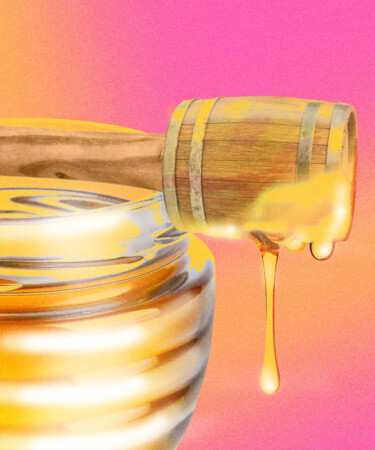It might be difficult to believe in the current whiskey landscape, but single-barrel bottlings haven’t always been around. In fact, the first-ever single-barrel American whiskey didn’t appear until 1984 when Elmer T. Lee, the master distiller for what is now Buffalo Trace Distillery, introduced Blanton’s as part of an initiative to increase the status of whiskey to a high-end product. Blanton’s was a massive hit, drawing the attention of whiskey lovers worldwide and kicking off somewhat of a frenzy for whiskey sourced from individual barrels.
Now, many whiskey distilleries offer specially selected single-barrel bottles — some are even chosen by and named for celebrities or beverage industry heavy hitters — each touting its premium designation on the label. And as the enthusiasm for the high-end spirit continues to rise, so does the curiosity about its nuances, and one of the most common and misunderstood terms used in single-barrel whiskey-making is “honey barrel.”
So what does this sticky name mean? Contrary to how it sounds, the term honey barrel is not actually a reference to honey as an ingredient. Even though many distilleries are experimenting with using honey in their barrel aging process, the phrase refers to the quality of the whiskey itself.
“If you are tasting through barrels, you might find one that is sweet but lacking spice or another that is lacking depth,” explains whiskey pro Blake Riber, owner of Seelbach’s online craft whiskey shop and founder of the renowned bourbon blog Bourbonr “[In that case], you would usually find the complementary barrel to blend it with that would help fill in those pieces of the puzzle. Occasionally, you will come across a barrel that offers all of these things, is well-balanced, and drinks incredibly well on its own. This is a honey barrel.” Essentially, whiskey pros will use this term to signify that they found an outstanding barrel with a complete and compelling flavor profile, making it ideal for a single-barrel bottling.
Riber does add that since the phrase has no strict definition and is not regulated by law, it is often overused and can lack meaning. Riber works with craft distilleries to curate his offerings at Seelbach’s Select, which are single-barrel whiskeys tasted and selected by Riber himself. Riber samples about 1,500 to 2,000 barrels a year during this process, and believes that he would only dub one out of every 500 barrels he encounters a true honey barrel. For this reason, Riber doesn’t use the term on his own site, and instead chooses to describe the whiskey with the story of the barrel and detailed tasting notes.
So, if every single-barrel whiskey is claiming to be a honey barrel, how do you decide which to buy? Riber recommends that “anyone looking for good single-barrel whiskeys should find someone who has a palate that they trust and buy their selections.” For example, if you try a few single-barrel bottles curated by a specific retailer and tend to enjoy their selections, it might be helpful to follow their releases when shopping for your next bottle. “And if they say they found a honey barrel, double down and get two bottles,” says Riber.
